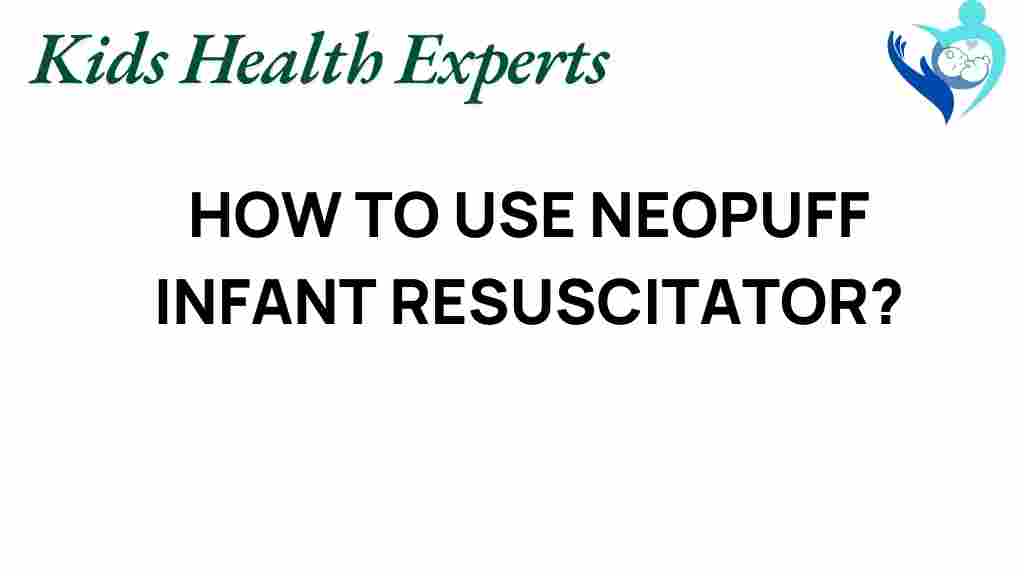Unlocking the Secrets of the Neopuff for Infant Resuscitation
In the realm of neonatal health and emergency care, the Neopuff infant resuscitator stands out as an essential piece of medical equipment. Designed specifically for pediatric care, the Neopuff provides vital respiratory support to newborns in distress. This article aims to explore the intricacies of the Neopuff, its application in life-saving techniques, and its crucial role in improving outcomes for infants requiring resuscitation.
What is the Neopuff?
The Neopuff is a sophisticated device used primarily in neonatal resuscitation. It functions by delivering a controlled flow of air and oxygen to infants who are unable to breathe adequately on their own. This is particularly important in emergency care situations where timely intervention can mean the difference between life and death.
- Designed for Neonates: The Neopuff is specifically engineered to cater to the unique physiological needs of newborns, ensuring safe and effective ventilation.
- Variable Pressure Settings: It allows healthcare providers to adjust pressure settings according to the infant’s condition, providing tailored respiratory support.
- Ease of Use: The intuitive design makes it user-friendly, enabling quick deployment in high-pressure emergency scenarios.
Importance of the Neopuff in Pediatric Care
Neonatal resuscitation is a critical component of pediatric care. The Neopuff plays an indispensable role in this context by:
- Reducing Hypoxia: By delivering oxygen-rich air, the Neopuff helps combat hypoxia, a condition where the body or a region of the body is deprived of adequate oxygen supply.
- Stabilizing Breathing: It aids in the stabilization of an infant’s breathing patterns, which is crucial during the first few moments after birth.
- Facilitating Team Coordination: The use of the Neopuff allows for better coordination among medical teams during resuscitation efforts.
How to Use the Neopuff: A Step-by-Step Guide
Using the Neopuff effectively requires proper training and understanding of the device. Here’s a step-by-step guide to its utilization:
Step 1: Preparation
Before using the Neopuff, ensure that the device is properly assembled and all settings are checked. Follow these sub-steps:
- Check for the availability of a power source, if applicable.
- Verify that the air and oxygen supply lines are connected securely.
- Adjust the pressure and flow settings based on the infant’s weight and clinical condition.
Step 2: Positioning the Infant
Proper positioning of the infant is crucial for effective resuscitation:
- Place the infant on a flat surface, ideally in a neonatal resuscitation area.
- Ensure that the airway is clear; use a suction device if necessary.
- Position the Neopuff mask over the infant’s nose and mouth, ensuring a tight seal.
Step 3: Administering Resuscitation
With the infant properly positioned, follow these steps:
- Begin by delivering gentle positive pressure ventilation.
- Monitor the infant’s response closely, looking for signs of improved breathing and oxygen saturation.
- Adjust settings as necessary to maintain adequate ventilation without causing barotrauma.
Step 4: Continuous Monitoring
Throughout the resuscitation process, continuous monitoring is vital:
- Regularly check the infant’s heart rate and oxygen saturation levels.
- Be prepared to switch to alternative resuscitation methods if the infant does not respond.
Troubleshooting Common Issues with the Neopuff
Even with the best equipment, challenges may arise. Here are some common issues and troubleshooting tips:
- Leakage Around the Mask: If air is leaking, ensure the mask is properly positioned and sealed against the infant’s face.
- Inconsistent Pressure Delivery: Check the pressure settings and ensure there are no obstructions in the air supply lines.
- Device Malfunction: If the Neopuff is not functioning as expected, power cycle the device and perform a quick self-check to ensure all components are operational.
Integrating the Neopuff into Emergency Care Protocols
To maximize the effectiveness of the Neopuff, it is essential to integrate it into the broader emergency care protocols for neonatal resuscitation. This includes:
- Training and Simulation: Regular training sessions for healthcare providers on the use of the Neopuff and conducting simulated resuscitation scenarios.
- Establishing Protocols: Developing clear protocols for when and how to use the Neopuff during various emergency scenarios.
- Collaboration: Encouraging teamwork among medical staff to ensure a coordinated response during resuscitation efforts.
Conclusion: The Impact of the Neopuff on Neonatal Health
The Neopuff infant resuscitator has revolutionized the field of neonatal resuscitation. Its ability to provide controlled respiratory support has made it a critical tool in emergency care and pediatric settings. By understanding its operation, troubleshooting potential issues, and integrating it into established protocols, healthcare providers can significantly enhance the survival rates of infants in distress.
As we continue to advance in neonatal health, the Neopuff remains at the forefront of life-saving techniques, ensuring that every newborn has the best possible start in life.
For more information on neonatal care equipment and protocols, visit this resource and explore best practices in pediatric care.
Join the conversation on the latest advancements in medical equipment and neonatal health by checking out this insightful article.
This article is in the category Care and created by KidsHealthExperts Team
